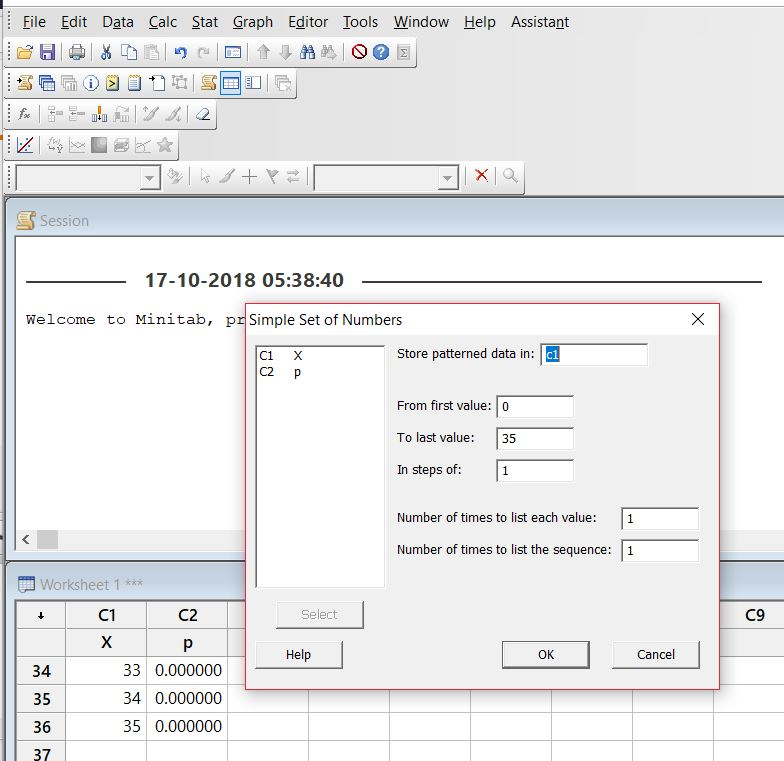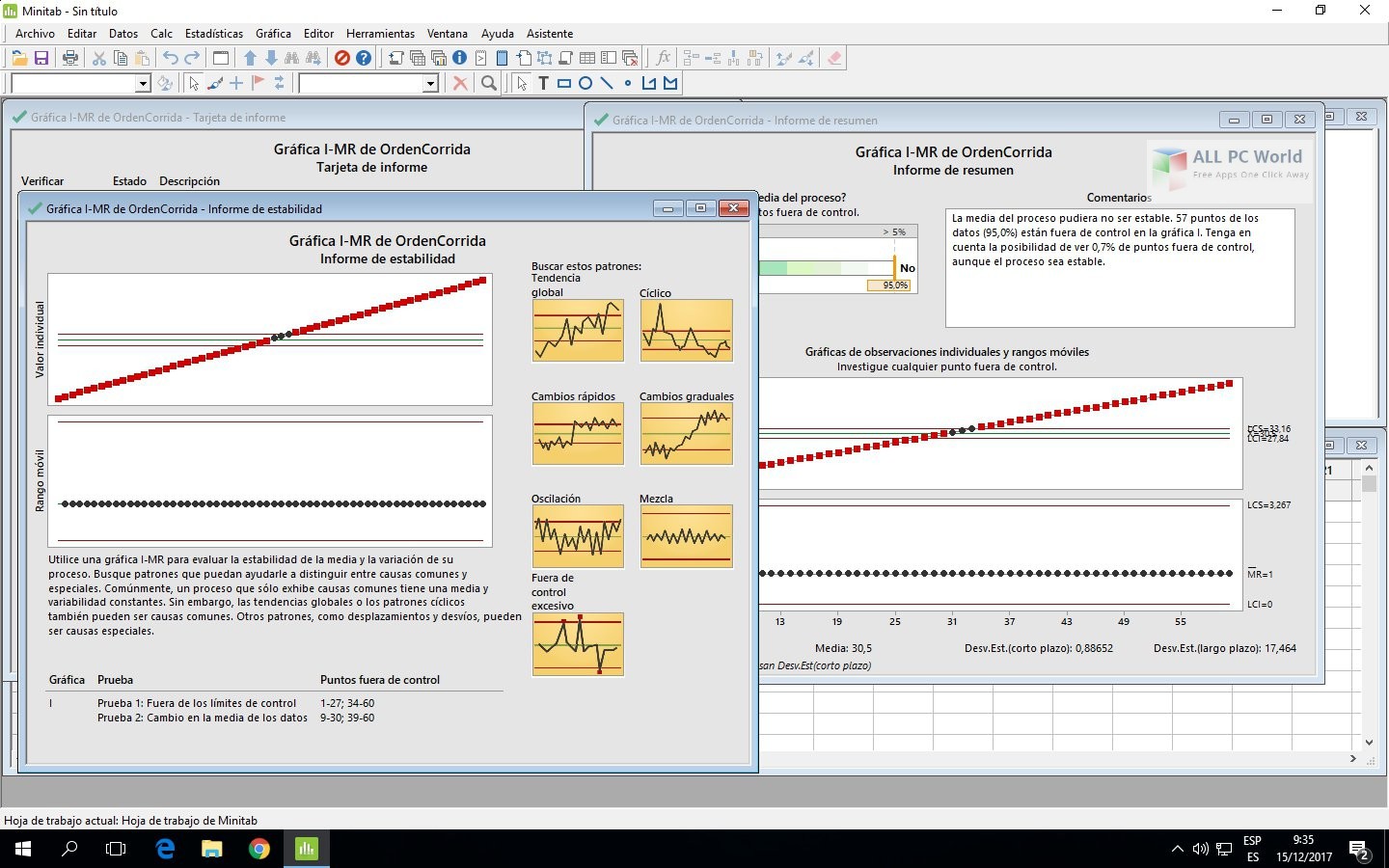

Examples are LOGE('X') for the natural logarithm of X and 'X'**2 for X 2. Current variables in the dataset can be moved into the Expression box, while the keypad and list of functions can be used to create the expression. Type a name (with no spaces) for the new variable in the Store result in variablebox, and type a mathematical expression for the variable in the Expression box. To transform data or compute a new variable, select Calc > Calculator.For example, to find out about "boxplots" click the Index tab, type boxplots in the first box, and select the index entry you want in the second box. You can access help by selecting Help > Help.Graphs appear in separate windows and can also easily be copied and pasted to other applications. Output appears in the Session Window and can be copied and pasted from Minitab to a word processor like OpenOffice Writer or Microsoft Word.To edit last dialog box, select Edit > Edit Last Dialog or click the Edit Last Dialog tool (ninth button from the left).

To open a Mintab data file, select File > Open.If desired, change Mintab's default options by selecting Tools > Options.

Getting started and summarizing univariate data
#Minitab calculator software#
Find instructions for other statistical software packages here. These instructions are based on Minitab 17 for Windows, but they (or something similar) should also work for other versions. The numbered items cross-reference with the "computer help" references in the book. These instructions accompany Applied Regression Modeling by Iain Pardoe, 2nd edition published by Wiley in 2012.


 0 kommentar(er)
0 kommentar(er)
